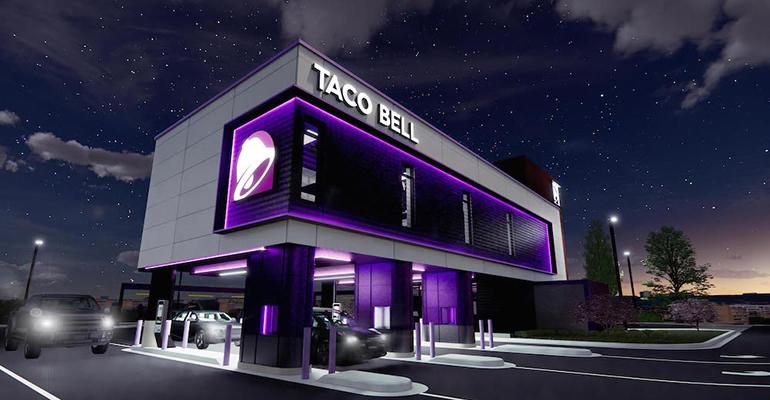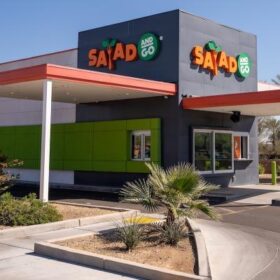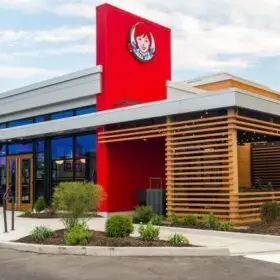
Yum Brands showed no signs of slowing down in the third quarter, with 10% system sales growth driven by 6% same-store sales growth and 6% unit growth. The company set a third quarter record for unit development, with 1,130 gross new restaurant openings. Digital sales jumped by more than 20% year-over-year and also set a record, exceeding $7 billion.
Taco Bell U.S. was one of the major highlights from the quarter, with domestic system sales up by 11% driven by 8% same-store sales growth and 3% unit growth.
“The Taco Bell team leveraged its magic formula that encompasses a balanced set of strategies, including brand buzz, unparalleled value, más occasions, and digital initiatives to grow transactions during the quarter,” Yum CEO David Gibbs said during Wednesday morning’s earnings call.
He noted Taco Bell’s $5 Box provided a “compelling” price point while remaining in the “intended 10% mix target,” which means the chain isn’t tilting too far toward value. In fact, he said Taco Bell’s income demographic is consistent across all levels, with 2-3% transaction growth.
“So, our stores in lower-income trade areas are performing well with good transaction growth, just like our stores in high-income traffic areas,” Gibbs said, adding that Taco Bell is balancing value while also benefitting from some trade down activity in higher-income areas.
Taco Bell’s momentum is expected to continue into Q4 and 2024 as the company continues to grow its chicken offerings, including with the launch of a new Cantina menu anticipated next year. Also, Taco Bell will enhance its loyalty program starting next year, where customers can more easily access channels to earn and redeem points. Gibbs said loyalty customers already spend 40% more per year than traditional customers, and the enhancement should contribute an even stronger tailwind.
“Members will enjoy more exclusive experiences, including more digital innovation, early access to new products, and loyalty-enabled experiences,” he said. “Eventually, the team will integrate its loyalty program with digital menu boards to create an even more personalized experience.”
Further, Yum’s proprietary commerce platform is now rolled out throughout the Taco Bell system which, according to CFO Chris Turner, allows the company to scale new capabilities at a quicker pace. All of Taco Bell U.S. locations are also now equipped with kiosks, which drive higher check sizes and margins, and allow the company to gain more consumer data and better personalize offers, Turner said.
“One thing Taco Bell does really well is constantly change and evolve to consumers’ taste … There’s lots of reasons to be excited about what Taco Bell is doing in 2024 … the impact that the tech can have, the insights we’re going to glean from data, Taco Tuesday … that we can leverage going forward,” Gibbs said. “The momentum we’re getting in breakfast, what we can do with loyalty. The business is, obviously, on a roll.”
As for Yum’s other brands, KFC U.S. was flat year-over-year, Pizza Hut U.S. was even, and the Habit Burger Grill’s same-store sales dropped by 5%. Domestically, KFC’s performance was a wildly different story from the international division, where the brand delivered 14% system sales, driven by 8% unit growth and 6% same-store sales growth. KFC U.S. is coming off of one of its most successful quarters in the past seven years following the launch of its nuggets, which created a new entry point to attract new customers, Gibbs said.
The company is also soon expected to launch its own loyalty program, KFC Rewards, while Yum’s recommended ordering technology, called AIM (Automated Inventory Management), is expected to be rolled out throughout the KFC U.S. system by the end of the year. The proprietary AI technology predicts and suggests the quantity of each product a restaurant general manager should order.
“You’ve seen us do things like launch nuggets and lean in more on the boneless (chicken). That’s a huge opportunity. It’s no secret chicken is a growing opportunity. We’re set up for success there as we evolve our business,” Gibbs said.
Pizza Hut U.S. highlights included the relaunch of its Big New Yorker Pizza and the recent extension of operating hours into the late-night daypart at more than 1,000 restaurants. Also, Yum’s proprietary commerce platform is rolling out to the Pizza Hut system, while Dragontail – Yum’s AI production/delivery sequencing platform – is now in nearly 1,400 U.S. restaurants.
“Pizza Hut has been taking share in the category now for the third consecutive quarter,” Gibbs said. “The way they play the aggregators versus their competition, the way they’re launching new products and forms like Melts, which brings in a new customer … It’s a tough category and we’re really pleased with the progress they’re making.”
Finally, The Habit grew unit count by 8%. The chain is developing a new packaging system to support off-premises business, along with a new store prototype that Gibbs said optimizes costs. And, in November, it will launch its first everyday value menu called Simple Crafts.
Overall, and in large part because of Taco Bell’s performance, Yum executives don’t seem to be phased by a challenging macroeconomic environment that has hindered traffic industrywide in the U.S. in recent months.
“It’s well documented there’s more pressure on the U.S. consumers and our industry has softened a little bit … For us, though, the U.S. is a much more favorable situation because Taco Bell is the majority of our sales and profits,” Gibbs said. “Our lens on the consumer is biased, but we’re putting up strong results. We’re seeing plenty of demand and we … are demonstrating we can thrive in any environment.”
Original Article:
[H/T] RestaurantBusinessOnline.com






 Powered by
Powered by